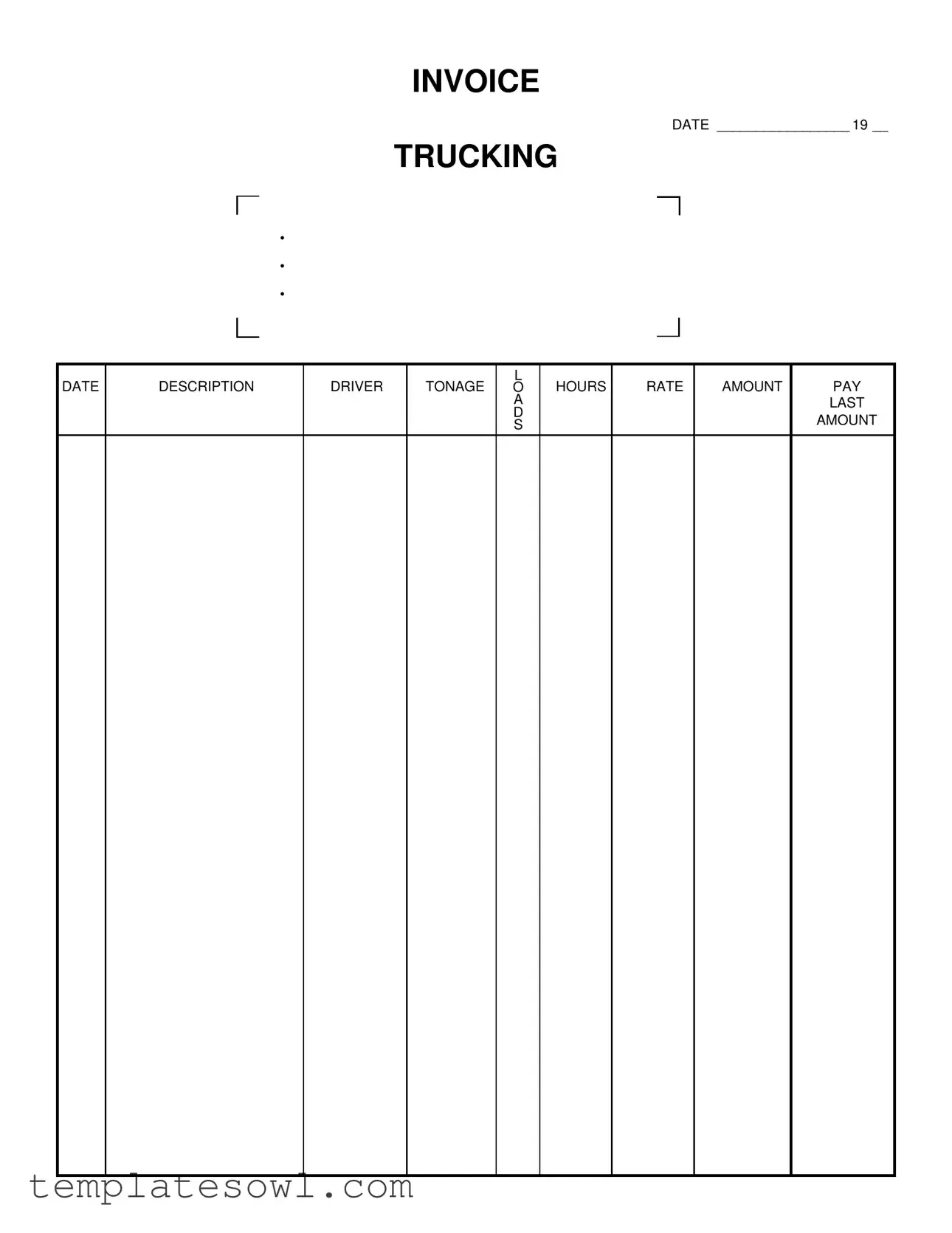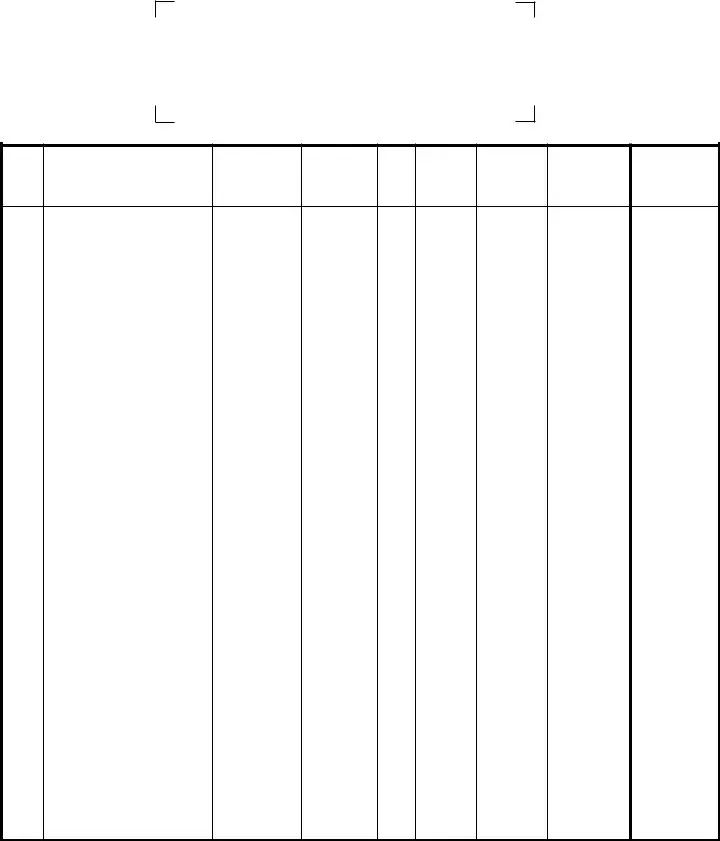What is a Trucking Invoice form?
A Trucking Invoice form is a financial document that outlines the services provided by a trucking company. It includes details such as the date of transport, a description of the cargo, the driver’s name, tonnage, hours worked, rate per hour, and the total amount due. This form serves as a record for both the service provider and the client regarding payment for services rendered.
What information is required on the Trucking Invoice form?
Essential information on the Trucking Invoice includes the invoice date, details of the service date, a brief description of the cargo transported, the name of the driver, the tonnage transported, hours logged for service, rate charged, and the total amount calculated. Each of these elements ensures clarity and accountability in the transaction.
How do I fill out the invoice date section?
When completing the invoice date section, enter the current date when the invoice is being issued. This date is crucial as it helps establish the timeframe for payment arrangements and service delivery. Use a consistent format, typically MM/DD/YYYY, to avoid confusion.
What should I include under the description of services?
The description should provide a clear outline of what services were provided. This could include specifics about the type of cargo transported, the origin and destination points, and any special handling or storage considerations. Be concise yet informative to ensure the client fully understands the nature of the service.
How should I determine the rate charged?
The rate charged should reflect your business's standard pricing structure, which can depend on factors like distance, cargo type, and market rates. It is advisable to regularly review this information against competitor pricing and operational costs to ensure fairness and competitiveness.
What does the tonnage section refer to?
The tonnage section refers to the weight of the cargo being transported, measured in tons. Accurate documentation of tonnage is vital for both billing purposes and regulatory compliance. It can affect fuel charges and freight costs, thus ensuring an accurate tonnage measurement benefits both parties involved.
Why is it important to keep a record of hours logged?
Keeping a record of hours logged is essential for several reasons. It helps in calculating labor costs accurately, ensuring compliance with labor regulations, and it can prevent disputes over time worked. Both the driver and the employer should agree on documented hours to maintain transparency and trust.
What happens if there is a mistake on the invoice?
If a mistake is found on the invoice, it is best to address it promptly. Correct the error and reissue the invoice as soon as possible. Keeping open lines of communication with the client is crucial; explain the error to them and ensure they have the correct document for their records.
How should I handle payments?
Payments should be addressed clearly in the invoice. Specify acceptable payment methods, due dates, and any penalties for late payments. Regular follow-ups can also be beneficial to encourage timely payments, fostering a professional relationship. Transparency about the payment process will help build trust with clients.
Can I use digital formats for the Trucking Invoice?
Yes, digital formats for the Trucking Invoice are not only acceptable but encouraged. Digital invoices can be easily streamlined and sent via email or through secure invoicing software. This method often simplifies the payment process and allows for quicker transactions, benefitting both the service provider and the client.

